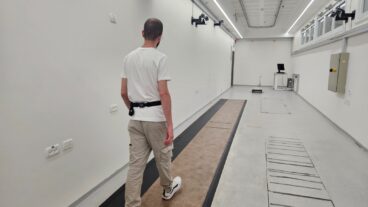Prof. Hadassa Degani of the Weizmann Institute of Science: There a lot of cases where biopsies are performed and they find out that the growth was not cancerous. We can save them the trouble of having to go through that biopsy.Thanks to a new non-invasive, diagnostic imaging technique developed in Israel, which is due to find its way to U.S. hospitals in the next year, many patients could be spared the pain and risk of biopsies.
According to the National Breast Coalition Fund, an estimated 3 million women in the U.S. are living with breast cancer: 2 million who have been diagnosed and an estimated 1 million who do not yet know they have the disease. More than 180,000 women are diagnosed with breast cancer each year. Breast cancer also affects more than 1,000 men in the U.S. each year. More than 200,000 cases of prostate cancer are reported each year in the U.S.
The Israeli technique, called 3TP, has recently received FDA clearance for use in the detection of breast and prostate cancer, and is slated for distribution as early as next year. It will enable doctors to distinguish between malignant tumors and benign lumps by scanning instead of cutting.
“If today, 70-80 percent of patients with growths are undergoing biopsies, we can lower that number to 10-15%,” said Prof. Hadassa Degani who developed the device with her research group at the Weizmann Institute of Science Biological Regulation Dept., in Rehovot. “This won’t change the fact that with every cancerous growth you’ll need to do perform a biopsy, but there a lot of cases where biopsies are performed and they find out that the growth was not cancerous. We can save them the trouble of having to go through that biopsy,” she told ISRAEL21c.
The 3TP (Three Time Point) technique uses existing magnetic resonance instrument (MRI) scanners and a safe contrast medium injected into the patient. The suspected tumor site is scanned by MRI repeatedly over a period of several minutes. The software developed for the method analyzes three of the MRI images, one before and two after the injection (hence the name 3TP), and then creates a colored likeness of the breast or prostate area based on the resulting data. A preponderance of red in the picture indicates malignancy, while mainly blue and green are signs of a benign growth.
The procedure arose from Degani’s research on the development of cancerous tumors. Typically, malignancies which need a steady supply of oxygen and nutrients in order to grow contain many small, new blood vessels, through which two-way blood flow is speeded up. Tumor cells are distributed unevenly, with areas of densely packed cells that have tighter between-cell spaces than normal.
To get the 3TP image, the image-enhancing contrast agent is injected into the bloodstream, and the flow of the agent into the area being scanned is traced. The agent, which quickly passes through the blood, enters and clears out of a cancerous tumor faster, and contrast agent escaping vessel walls (new blood vessels tend to leak) will be highlighted, along with the spaces between cells. By making calculations based on comparisons between the images, the software can assign a color to each tiny pixel making up the graphic image.
Several U.S. hospitals have participated in clinical trials of the technique, testing hundreds of patients scheduled to undergo biopsies.
The 3TP scans were sent to Degani’s lab in Israel for analysis, and her diagnoses were later compared with the results of the actual biopsies. Since tests were conducted in such a way that Degani was left in the dark about the patient’s medical history; her results were based solely on the 3TP image. Doctors, as well, did not see the 3TP results until they had reached a diagnosis through biopsy. In impressive trial results, solid growths larger than five millimeters were diagnosed correctly nearly 100 percent of the time using 3TP. For all trials, including patients with DCIS (a non-invasive, non-lump-forming cancer in the milk ducts), the accuracy rate was close to 90%.
While others have come up with various methods of diagnosing cancer using MRI technology, Degani emphasizes that the 3TP technique is speedy and the only one that provides an accurate, standardized system that any clinician can easily use. The procedure is likely to be used in the future to diagnose a variety of cancers and, while it is moving from the trial stages to clinical use on breast and prostate tumors, research is starting on lung cases.
In addition, more research will be done on using 3TP scanning to track the response of tumors to anti-cancer therapies.
A US company called 3TP LLC, in operation a little over a year, will distribute the technology. It was established to market 3TP, for which it received worldwide rights through Yeda, the commercial arm of the Weizmann Institute.
“This has been a long road,” said Degani. “We started the initial research over 10 years ago, and the first published research on the 3TP was in Nature Medicine in 1997. Since then there’s been a long period of clinical trials to bring this to fruition. To tell the truth, I feel good about the FDA clearance, but I don’t see this as the end of road. We still need to see if the device is accepted among the medical profession in the U.S., if we can go from the small amount of people it’s been tested on to a bigger distribution.”
Because 3TP is non-invasive, and is based on existing MRI technology, the FDA clearing process was shorter than expected. Now the company, presently engaged in beta-testing of its product in six American medical institutions, is seeking clearance in Canada and Europe.












